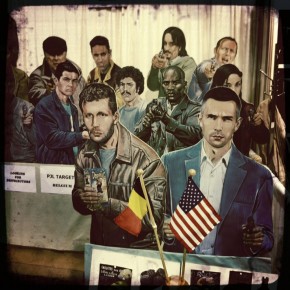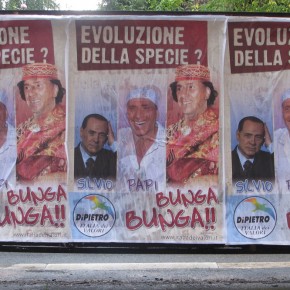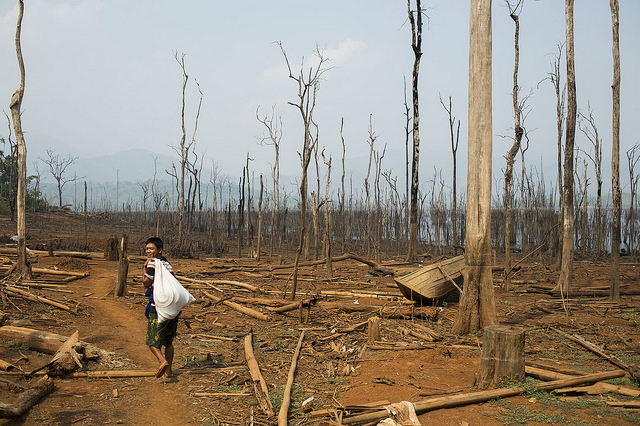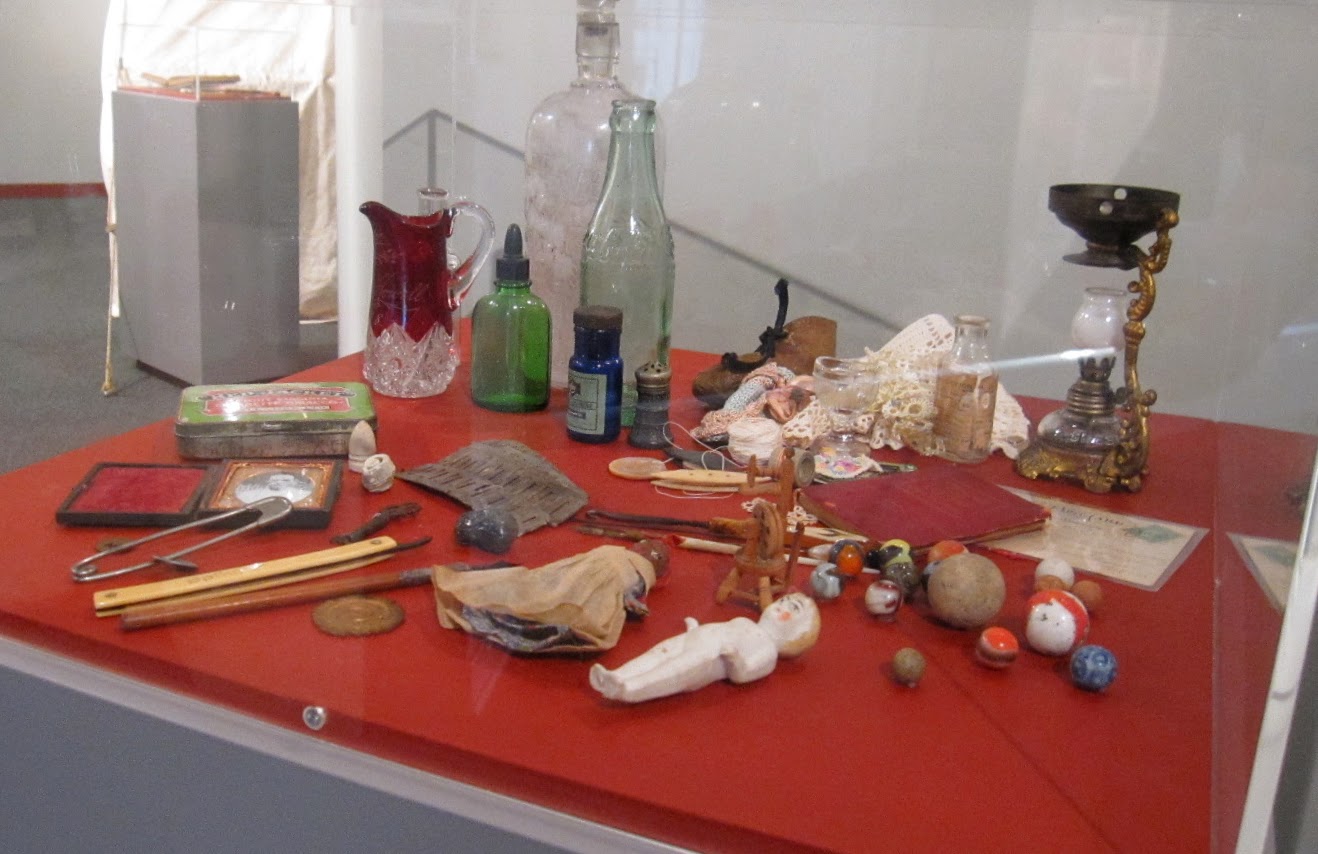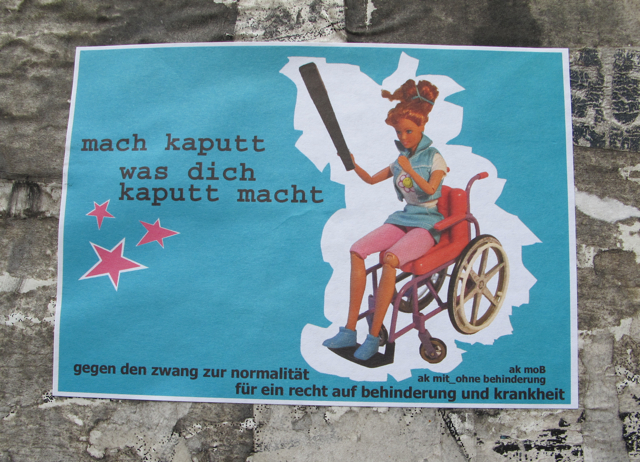This piece, part of the Copper Belt Project, is the first in a series — listed here — exploring the forgotten people and places of an iconic American landscape scarred by a history of economic and environmental violence.
I haven’t wanted to talk about politics lately, at least the sort you read about in the newspaper. What the hell am I going to say? It’s dire out there, and there’s no end in sight. People are still losing their jobs, budgets are being cut, jobs outsourced, homes gutted. In some ways, the world has never looked bleaker. You can read about it in the headlines.
I’ve found a new way to explore the political landscape through art, geography, my camera and my words. Instead of hammering the facts and the stats that plaster the news headlines, I’ve decided to document the people you don’t read about, the relics of this failing empire, the physical traces of the pain the global economy is causing so many people.
As often as I’m able, in between working a full-time job and taking care of my daughter, I leave my home in Tucson, Arizona and all the pressures of everyday life for a trip into another world – Arizona’s Copper Belt. I call the sites I visit the “wreckage”, which is the perfect name for them on so many levels. The wreckage of homes and jobs lost. The wreckage left in the wake of the giant beast of global capitalism. The wreckage of this so-called democracy.

For most of the twentieth century, Arizona’s economy depended heavily on mining. In Arizona’s southeastern mountains, boom and bust cycles turned on the price of what could be extracted from the ground, especially copper. But until the price of that crucial mineral started rising recently, the towns along the Copper Belt were becoming graveyards for a way of life.
The irony is that, even while the copper mining towns were being gutted and union jobs outsourced to other countries, copper was becoming more and more important for the mass communication grid that allows global capitalism to function as a giant living body. Without copper, there wouldn’t be a need to outsource so much. Copper is what connects the body together, what keeps it going, the material from which its veins and arteries are made.
Now that the cost of copper and demand for it have risen, some of the miners are back, though nowhere near as many as used to work the pits. Technology and competition from abroad have seen to that. Driving through Copper Belt towns like Clifton and Globe and Safford, it’s impossible not to notice how many businesses have failed and how many houses have been abandoned. The workers who are lucky enough to have jobs tend to be transients in the landscape, staying in motels during the week before heading back to their families in places where it can still feel like home.
Maybe that’s why I find the Copper Belt strangely liberating. In this place where the landscape was already ravaged by massive environmental pollution and despair, long before the current economic crisis, life goes on in spite of the odds. My friend and collaborator Mark Hahn is working on this project with me. The people he and I meet out there on our trips are survivors, able to salvage hope under the most depressing conditions. They inspire me to do the same.
I stand in the Copper Belt with my camera and feel free. Maybe it’s because I find beauty in the wreckage all around me, the burnt-out shells of a happier time. Maybe it’s because in becoming one with the landscape, I feel my own burdens slip away, like all the abandoned things in my field of vision.

I call what I’m doing there, the places I photograph and the people I write about, my Copper Belt project. Mark and I will eventually present our work together in a collaborative art installation. And I will turn my contribution into a book. For now, though, I’m content to share this work in progress as an experiment in personal and political geography, a way of excavating a reality that would otherwise lie buried in the wreckage.
It’s hard to take the measure of a place you visit over and over. Each trip adds new layers of meaning, slight nuances of change. Even when things don’t change at all the light that hits them and the way I see them does. Sometimes the way I see things on a repeat visit conflicts with my earlier vision or understanding of a place. It makes it difficult to tell a fixed story. That’s why I like to write about what it feels like to go back, to learn something new each time.
The stories I want to tell are the kind that won’t let a place be. Even in the wrecked landscape of the Copper Belt, things are constantly in flux and have the potential to transcend being locked in time and become something else even when they lay entombed in the desert. This is the story I’ve been telling about myself, too. The longer I work on my Copper Belt Project, the more I realize that there’s something new rising from the wreckage of my own life, that I can use this project not just to document the economic and personal loss of the people who have left their traces on the landscape and to turn it into something visible and beautiful, but also to carve something meaningful and solid out of the legacy of pain in my own life.
I’ll begin this journey of discovery where the Copper Belt does, in the town of Safford, Arizona. Fittingly, I discovered it on the way to somewhere else. A few months ago, Mark and I were on our way to Clifton, which serves as a base for the largest copper mine in the United States. We hadn’t meant to stop. But as we drove through Safford we saw home after home left abandoned and gutted. The ruins of these homes littered the landscape as if it had been pummeled by a tornado or a hurricane. We stopped and explored a few of the houses. It was shocking what a state of absolute decay these places were in.

From the the outside, it looked as if they could have been abandoned for decades. But the evidence inside proved otherwise. Many had only been lost in the past few years. They were corpses left behind by the twenty-first century global market, standing there like ancient relics. Picking our way through the remains, Mark and I realized that these were haunted houses. We would turn a corner or open a door and shudder at the powerful sense of paranormal activity.
If there were ghosts confined to these ruins, though, they weren’t just the product of private violence. Because what had been murdered was a way of life, the working-class jobs that people were once able to count on in order to provide a home for their families. These jobs are an endangered species all over the United States. It’s not always easy to see that in the big cities and well-off suburbs, where we are distracted by the success of those who are still making it. In Safford, though, it’s impossible not to notice the effects of the economic plague that has ravaged the land.

I have many stories about Stafford. But I can’t tell them all at once. Some day I hope to create a map showing how they relate to each other, the connections between them. That’s why I’ve started bringing a GPS unit with me on my trips to the Copper Belt, so I can overlay my personal experience with coordinates that anyone can locate. For now, though, let me start by illustrating what I mean about finding something new each time I visit. Let me start with the story of the Aborted Ken Doll Mission.
As I prepared the photos to tell you this story, I realized that it’s about so much more than one lone faux Ken doll lying in an abandoned RV in Safford, AZ. You see, to tell you the full story of the Aborted Ken Doll Mission, I needed to revisit three sets of photos I took in Safford. I took the first set on Dec 3, 2010, the second set on January 15, 2011, and the third set on March 19, 2011.
I have to tell you about the three different dates because in examining how the passage of time registers in the photographs I took, I realize that there are two different kinds of places that I’ve been visiting as part of my Copper Belt Project. All of them are strange burial grounds, the objects that they contain like bodies entombed in the landscape.
Some of these bodies are in an active state of decay, threatening to succumb to the elements crumble at any second. They can be completely wiped out by storms, flames, thunder or vandals. But others are in a state of utter stasis, completely frozen in time, caught in a vacuum where nothing changes except the arrangement of dust on a silent surface.
On my return trips to the Copper Belt, I am always amazed at how things change between one visit and the next. Sometimes the change will be violent, an entire building leveled or its walls ripped off by wind or vandals. Other times the change is subtle, a cinderblock placed in the center of a room that was previously empty. These subtle changes are like the traces of ghosts. Who is it that stepped inside this long forgotten body and rearranged its insides? Did the body do it to itself when no one was looking?
The more I return to the places, the more I am compelled to keep returning. The landscapes I see are so fragile. The light changes. Sheetrock crumbles. Aluminum tears. Even the whole infrastructure can collapse. They can be gone in an instant. I capture them in my camera, and then I let them be. When I’m inside them, I watch my footing, try not to move anything, break anything, or disturb any part of the body, as if I am walking on sacred ground. Yes, these places are full of artifacts, pieces of things now bordering on extinction – from dishware to telephones – but try not to touch any of it.

This all brings me to the story of the Ken doll in the abandoned RV out in Safford. I didn’t notice the RV or the doll on my first trip to Safford because I was too preoccupied with photographing old cars, hollow trailers, and a dead swimming pool. In fact, now that I look at one of the first photos I took back in December, I realize that the RV was right behind the car and trailer I was pointing my camera at, but I didn’t register it.
On my second visit I saw it. I spotted the body of the RV sitting there in the field of dead weeds. The driver’s door was slightly cracked. I walked right up to it, pulled the door open and stepped inside. It was like stepping inside a lost photo album, inside the past of people who were long gone, but still everywhere around me.

Here were all these things – a fan, a deck of cards, a coffee maker, paper plates, cups, a can of coffee, dishes, and board games– all piled in a heap. The people who owned the RV could have just stepped outside, could have been gone for years, could have been right there with me. I was astounded by the array of stuff, all these personal things left to sit in their RV tomb out in the mountain desert.
I snapped photos with my camera, but it seemed impossible to capture the magnitude of this body with its intimate parts frozen in a state of permanent upheaval. Some pieces were strewn in piles of wreckage, but others were totally untouched, as if they had just been laid down for a moment .
This was the case of the Ken doll. I looked down, and there he was on the kitchen counter. It wasn’t the Ken doll itself that caught my eye, but his hand-crocheted suit, something that someone probably made in the late 1960s. I thought this Ken doll was the most amazing find, the sort of thing I used to collect,but I didn’t touch him. I left him where he was and snapped a couple of shots of him in his dashing suit.

After I got back to Tucson and told my daughter about my trip because she likes to hear about the places I go. When I told her about the Ken doll in the hand-crocheted suit, I immediately regretted not picking the doll up for her. It was weird because I am adamant about never taking anything from the places I photograph, but when I told my daughter about the Ken doll, I suddenly was overwhelmed with regret that I didn’t bring him home to her.
Then, a few weeks ago, I was heading back to Safford with Mark to document some of the sites I’ve visited and map their GPS coordinates and decided that it was my mission retrieve the Ken doll for my daughter. As we approached Safford, I found myself getting really anxious. What if the Ken doll was gone? What if the RV was gone? What if I’d missed my window of opportunity since everything in that landscape is so transient?
We pulled up to the field where I originally discovered the RV amongst the other dead cars, buildings, and trailers. I grabbed my camera, bolted from the car, and ran across the field to see if the RV was still there. Itt was sitting right where I left it. The backdoor was flapping wide open, the body of the trailer exposed and vulnerable. I immediately had an anxiety attack. Obviously, someone had been inside, and obviously the very first thing they would have taken was the Ken doll. My stomach was in a knot of nerves. I put my foot on the step, expecting to find an empty counter where the Ken doll had been sitting in January.

I climbed inside and looked over at the counter. And there it was. Exactly where I’d left it in January. Completely untouched, the Ken doll was resting quietly in his RV tomb, his eyes staring happily and blankly up at the ceiling. Without thinking, I grabbed him in my hand and lifted him. He was light. He didn’t have the weight of a Ken doll. I knew in an instant, because I’d spent countless hours playing with Barbie, Ken and, yes, Skipper as a girl.
That’s when I realized that this was actually a faux Ken doll, some cheap knock-off from the five and dime. His feet were buried in a crocheted covered cardboard base. I pulled one out to make sure he actually had feet. He did. I put his foot back in the base. My hands were coated with a sticky chalky dust from Ken’s suit. I walked to the door to tell Mark that I’d found him.
On my way out, I looked down and noticed another hand-crocheted garment. It was some kind wedding dress. In the middle of the billows of stained yarn was a headless Barbie, a little round knob at the top of her neck where her head had been torn off. Ken’s bride. Obviously, this Barbie and Ken doll were once married. Someone had lovingly crocheted the gown and suit. Maybe at the dolls had once resided on top of a homemade wedding cake.
I looked down at the headless body of Barbie and lifted her body delicately off the ground, hoping to find her head. But all I found was rat shit and old stained magazines. I placed the decapitated Barbie back on the ground where I’d found her. Now this faux Ken doll felt heavy and awkward in my hand. I stepped outside. The sun was blinding.
I’d taken two steps across the field towards Mark when I realized I couldn’t complete my mission. I had done something terribly wrong. I never should have moved the Ken doll and disturbed this domestic grave, this intimate place occupied by the people who no longer occupied it. And to think that I wanted to give the doll to my daughter?! It would have been like giving her a corpse I’d dug from a grave.
There was something terribly tragic about moving the Ken doll. I felt coated with the weight and filth of my bad decision. It wasn’t just the rat shit, the stained yarn and the literal dirt. There was something dirty about disturbing this scene. Who knows what happened to the people who made this RV their home, who had these dolls on their wedding cake, who sat around the table playing cards, who turned on the little fan on the dashboard in an attempt to capture a breath of cool air in the oppressive heat of Arizona summer?

I placed the Ken doll and his headless bride on the top step of the trailer and snapped a photo. Posing these dolls that I’d disturbed from their slumber felt like performing some kind of act of tawdry artifact pornography. Mark headed towards me from across the field. I looked up at him. “I can’t do it. I can’t take it.” He already knew. He’d known all along.
“What should I do?” I asked, looking down at the tableau I’d created on the steps of the trailer.
“I’d put him back exactly where you found him,” Mark said.
So that’s just what I did. I placed the faux Ken back on the kitchen counter and took a photograph of him back in his place of rest where hopefully no one else will disturb him.

When I got home, I told my daughter about the Ken doll and how I couldn’t take him. She understood immediately. Without saying the words, we both understood that bringing the Ken doll home would have been like an act of grave robbing.
Thinking back about that image of the doll lying on the kitchen counter in the RV in exactly the same place I found him back in January, I realize that in a way, the places I visit that aren’t in a state of constant decay, the ones that are frozen in time, are somehow even more alive than the buildings that are gradually being reduced to nothing. There is an electric charge, a kind of spirit trapped in stasis in places like that old RV, and I was guilty of disturbing that spirit.
Writing this story out, I realize how desperate and irrational I was in my quest for the abandoned Ken doll, how I ran to that RV as if my whole life depended on it. It’s only in writing this story that I realize why I would suddenly break my vow not to disturb the places I visit, why I would so egregiously violate the rules of engagement I’d set for my Copper Belt Project
Sure, I had loved playing with Barbies as a girl. I didn’t have many, but the ones I had I loved very much. But what made me want to rescue the Ken doll wasn’t just nostalgia or a collector’s impulse. You see, nothing from my childhood has survived. Time and again, I have mourned the fact that I don’t have my Barbies to pass along to my daughter. Time and again she has told me, “Mom, I wish I could see the Barbies you had when you were a girl.” I am so sad that I have nothing from my childhood to share with her.
Seeing that Ken doll which dated back to the very time when I started playing with Barbies must have unconsciously triggered that sense of loss, made me think that by going back to Safford and getting him out of that trailer, I could go back into my past and retrieve one of my own dolls to give to my daughter. Instead, what I found is that you really shouldn’t mess with ghosts. It’s better to leave them lying where they are, even if it’s a pile of rat shit.

The trips I’ve been taking out into the wreckage as part of my Copper Belt project are a way for me to reconcile with my past. Part of me wishes that my temporary violation of that old Ken doll in the RV was supposed to happen, so that somehow I could finally put my own lost Ken dolls to rest. And it’s not just the dolls that I’m talking about either. It’s my whole lost childhood that I want to put to rest.
But truthfully, the longer I work on this project, the more I realize that nothing is ever really put to rest. The wreckage is still there. It’s just that I’m seeing it in a different light now. Maybe there’s a lesson in the physical landscape of the Copper Belt. This is one of those places where the earth itself has undergone radical transformations in my lifetime. All the abandoned structures, all the lost objects lying strewn about are mirrored in the earth itself.
There’s no way to undo the damage. Wind, fire, water may sweep things away. Yet the scars of the Copper Belt will remain, just like the scars we carry with us through life. True redemption won’t come from trying to make things right, giving that faux Ken Doll a new home, but from acknowledging him where he is, the wrongs to which his tomb in the RV testifies. That’s the best we can do: see the wreckage for what it is while leaving room in our hearts for what it might become.

